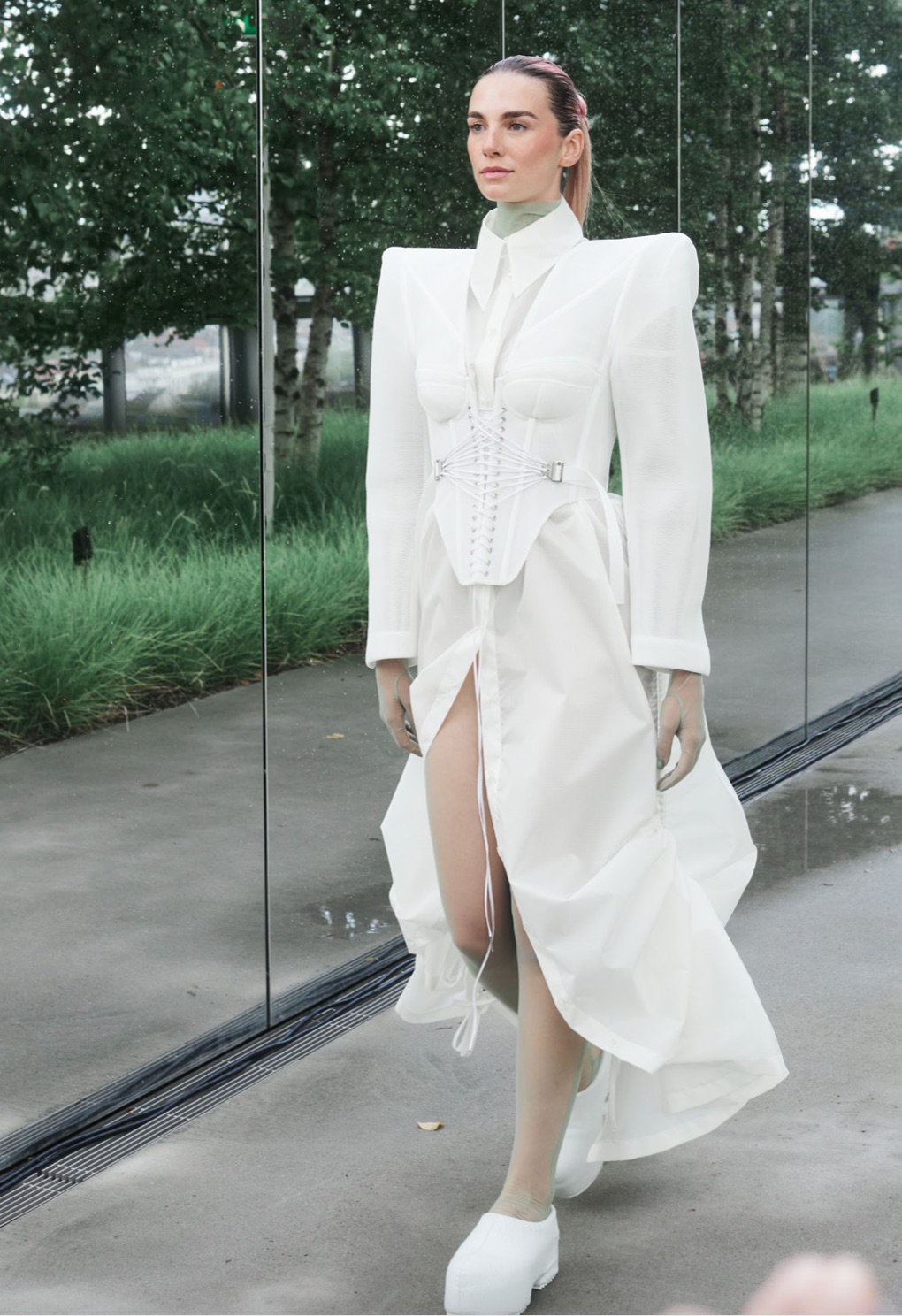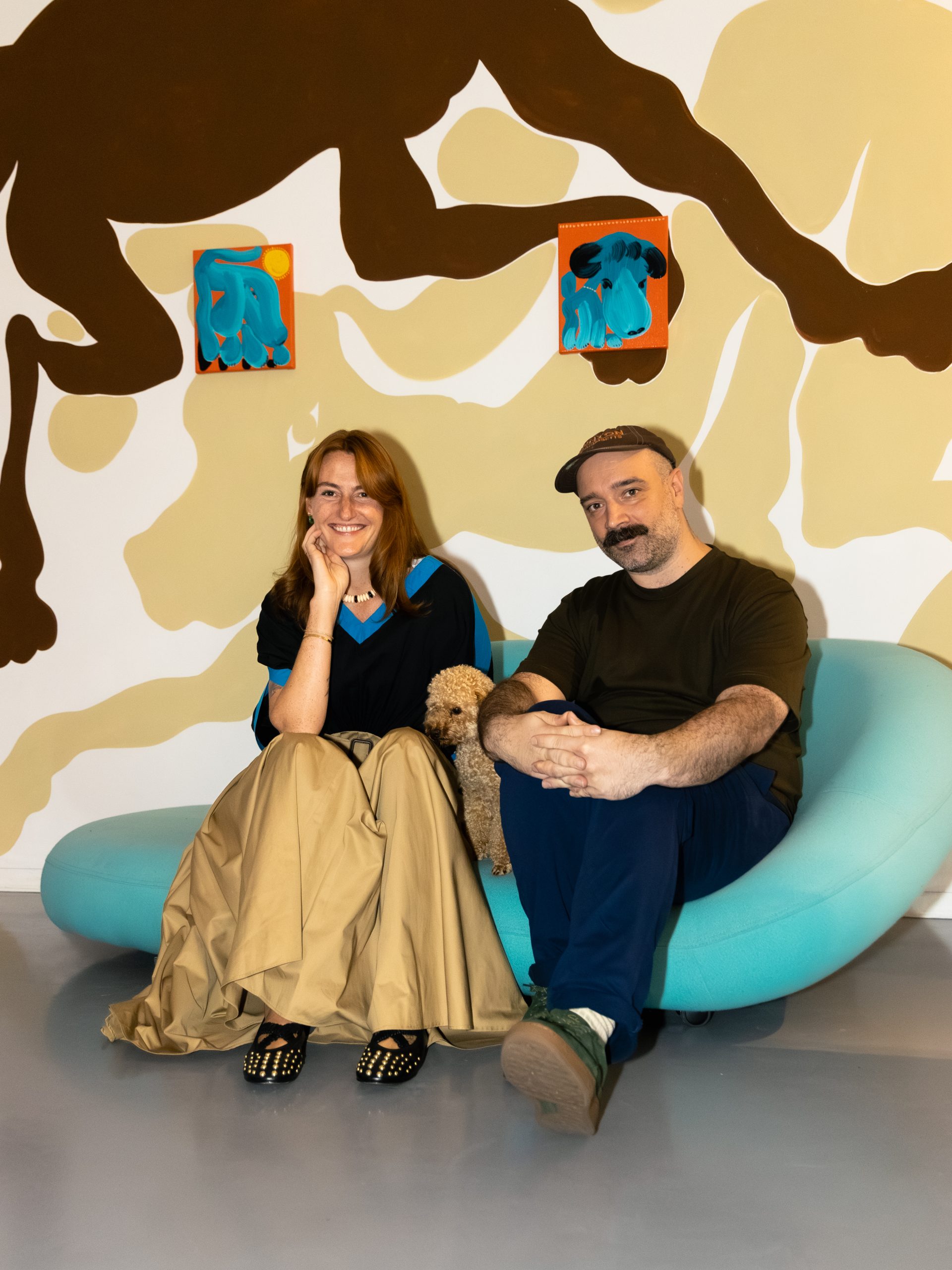Explore our highlights from AFW, an experimental multidisciplinary series of events reminding us that fashion truly is at the intersection of art, culture, and history.

Photography by Philip Boakye, @pmboakye

Set amongst the rich art history and energetic contemporary fashion scene of the city, Amsterdam Fashion Week highlighted and celebrated the ever-growing hub for designers, artists, filmmakers, and creatives of all disciplines. Walking across the glorious canals, past narrow boats and bicycles, it was easy to feel the spirit and artistry on every turn. And no matter how similar every street may have looked from the outside (to a visitor at least), stepping inside there was no denying the diverse array of programmes that the buildings held.
From dance performances to visual artists’ new collections, perhaps what made Amsterdam Fashion Week so thrilling was this multidisciplinary approach — reminding us that fashion has never existed within a vacuum, but amongst the wider creative spheres and greater socio-political structure of our past, present, and future.
With classic runway shows, collaborations, and short films, the schedule of events consistently surprised and captivated attendees, who never saw the same thing twice. From Wandler x David Surman’s dinner party to David Laport’s sample sale to Lissa Brandon’s short film and beyond, here are our top moments from Amsterdam Fashion Week.
Five Apples Do Not Make A Pair, Lissa Brandon


Have you ever walked into a cinema and had someone hand you a small bottle of liquid with herbs floating inside to drink “when the meditation begins” with no other explanation? Slightly concerned but mostly intrigued, I sat down and waited for further instructions. And I was not disappointed.
Celebrating a decade of her work, multidisciplinary artist Lissa Brandon debuted her short film Five Apples Do Not Make A Pair at Eye Filmmuseum on the first day of Amsterdam Fashion Week. Starting off the screening with a 4D experience of meditation and tea, the event was a thought provoking and introspective blend of fashion, film, performance, and expression. Touching on themes of rebirth and self-discovery, the film was directed by Tim Wes and served as the debut of Brandon’s alter ego, Mojo Nodnarb. The most emotional scene of the film, in my opinion, was the moment that the protagonist cuts off her braids. As her expression shifts from fear to freedom, it is easy to feel the crowd’s breath come to a standstill.
“My heart is filled with love and gratitude for everyone who has put their energy into this body of work,” Brandon states. “My indispensable right hand Ricky Letnom and I have really been living up to this moment and it’s a huge blessing to see the puzzle slowly fall into place.”
We can’t wait for what’s to come.
David Laport






Photography by Philip Boakye, @pmboakye


In the midst of getting ready himself and preparing for his event, David Laport welcomed me into his space and greeted me like an old friend. From the sample sale of past seasons happening upstairs to the models running around in the newest pieces, there was an unmatched energy within the walls that instantly consumed me. Taking me around the new drop — a RTW version of his couture collection — Laport details his fabrication techniques and approach to a sustainable, wearable, and accessible interpretation of avant-garde fashion.
“The inner part of the world is melting and that [theoretically] means life could grow,” Laport tells me. “What would that look like? Flowers on the North Pole?” After leaving me to ponder this for a moment, he explains that the idea that flora and fauna could begin popping up where isn’t expected was the core idea behind his couture collection and this subsequent interpretation. “They’d be a type of chemical flower.”
With vibrant hues, floral-reflected silhouettes and embellishments, and recycled materials that take care not to harm the nature its designs represent, Laport creates artistic masterpieces that merge and blur the lines between natural and manmade. Perhaps the highlight is the “lettuce” embellishment, a carefully crafted design on a top that mirrors the layers and silhouette of a lettuce, or the “feathers” he created out of recycled materials. Maybe it’s the fabric that can be moulded into something new or the completely biodegradable skirt with the finest pleats I’ve ever seen. Most likely, it’s the comprehensive and lively environment created by every piece in the room coming together — a garden that feels as grand as it does intimate.
Max Zara Sterck



Photography by @teampeterstigter

Walking into the performance space for Max Zara Sterck’s show, it was completely pitch black, save for a few flashlights preventing the audience from bumping into one another or tripping on the benches set around the floor-level stage. Breaking through the dramatic darkness, spotlights began popping up to showcase models-slash-dancers in Sterck’s latest collection of movable, striking pieces — and the show was underway.
Set to slam poetry that discussed the complexities and demanding expectations of being a woman, the garments came alive as characters of their own, interacting not only with their wearer’s body but with their space and that of another person. In mainly monochrome black looks, with the exception of a singular all-white alternative, the dancers blurred the lines between runway and contemporary dance routine, holding my attention from start to finish.
Tess van Zalinge


Photography by Jasper Abels


After debuting a few select looks during Copenhagen Fashion Week, Tess van Zalinge opened Amsterdam Fashion Week on the rooftop garden of Depot Boijmans Van Beuningen in Rotterdam. Set high above the busy streets, between mirrored walls reflecting trees and sky, models and everyday women alike walked through an otherworldly environment in a collection fit for its atmosphere.
The collection, titled Klavertje Drie, is a celebration of the magic and fascination that exists around and within us. Touching on themes of appreciating and working with what you have, she draws on summertime childhood memories searching for four-leaf clovers amongst a Dutch field of three-leaf counterparts — and her sustainable approach to design. Using leftover materials from prominent fashion houses, she highlights the power of reuse in a layered, complex yet playful portrayal of her sustainable and accessible intersection of couture and ready-to-wear.
PAWS, Wandler x David Surman


Photography by Karsten Bonnaire


Walking into Stigter Van Doesburg on the corner of narrow cobblestone streets in the heart of Amsterdam, I was greeted by the warmth of subtly bright hues and welcomed by the hospitality of dogs that mirrored the paintings and murals on the walls. Wandler and David Surman’s PAWS, a collaborative pop-up gallery show, instantly made me feel at home.
It is hard to believe that this is the first collaboration between Elza Wandler’s namesake luxury brand and London-based artist David Surman. With similar colour palettes and ideas about the accessibility of art and fashion, and of course a shared love of dogs, the two partnered with an organic sense of ease. Looking to Amsterdam’s art history, they brought the post-war CoBrA movement’s principles of experimentation and partnership to a contemporary scene, swapping the traditional snake motif for a dog and highlighting the connection between humans and animals. With David Surman’s large-scale mural and dog portraits covering the white gallery walls, Wandler’s PS24 collection displayed in visual harmony, and the energy of guests eager to interact with the work, the pop-up’s opening event was a powerful portrayal of optimism, friendship, compassion, and intrigue. Coming together, the two artists complemented and enriched each other’s work and created a new realm of enchantment — accomplishing what all great collaborations seek to.
The Patchwork Family


Photography by Victor Garcia Cardenas, @vitoriogc


Graduating in the middle of Covid-19 lockdowns, without the typical support of teachers and in-person studies, there was a heightened barrier to entry in the fashion industry. A growing problem within the field, designers were struggling to find jobs, often encouraged to abandon principles for paychecks, and had to put the creativity they had fostered during their time at university on the back burner. Meike van Lelyveld and Marco Blazevic had a different idea. Gathering their classmates, who also happened to be close friends, they started a collective centred around upcycling, sustainability, individuality, and experimentation. Encouraging creativity while assisting with show production and management, The Patchwork Family has been evolving and expanding throughout the past two years into the successful and exciting project it is today.
“We had all had very different internships, some went more commercial while some went to small startups,” Blazevic tells me over Zoom. “But we all had a feeling that this wasn’t how we wanted to live in the fashion industry. We had a realisation that it was toxic on the inside, for our own mental health, as well as toxic to the outside on an ecological sense. Before we fix all ecological impacts, we need to fix the sustainability for the designers on the inside. There’s no bad people in fashion, I think. Everyone tries to do their best, but we all live in a big construct focused on making money, schedules, and time pressure that doesn’t give individuals the possibilities to make the right decisions.”
He tells me that it boils down to solving the ego of fashion, which is born from fear: “Everyone was super scared before graduating, and that fear can turn into toxic behaviour.”
Channelling that energy into something else, The Patchwork Family is a positive, exciting, accepting, and community-oriented collective, and their show during Amsterdam Fashion Week was just that. Their third time working with Club Church, the event featured the following designers: characharaboy (he), Berber Struiksma (she), Kika Perben (she), Marco Blazevic (they), Meike van Lelyveld (she), ‘’NIÑO DIVINO (he), Papa Yorick (he), Rachel Klok (she), Salomé Jeanne (they), and Wolter Pot (he).
“Every project we do, we never do something we’ve done before. Every time it’s a new adventure,” Lelyveld explains. “We’ve been trying out a lot this year, figuring out where we want to go, and I think now doing an actual on schedule show has brought a whole new layer to the production.”








